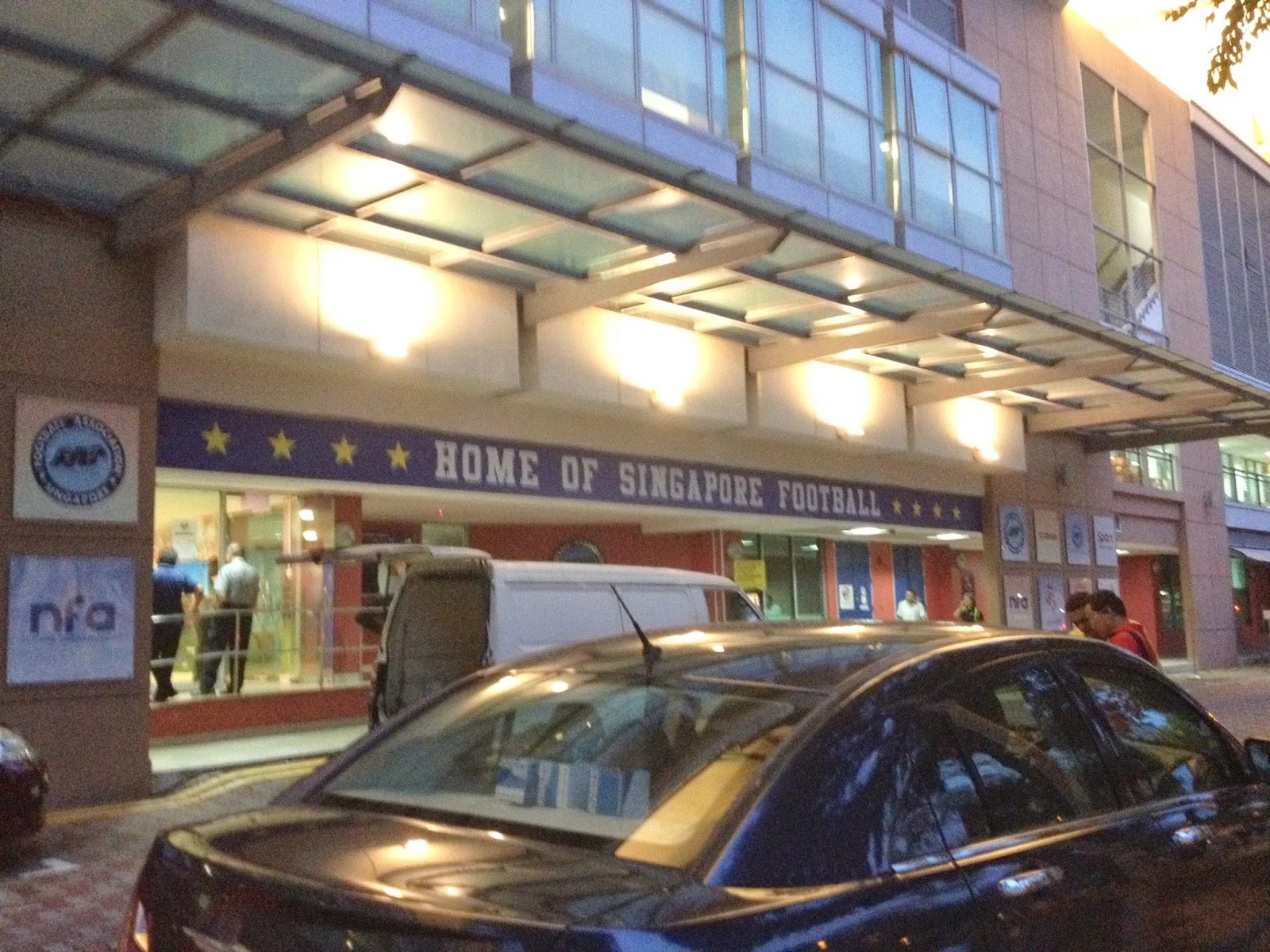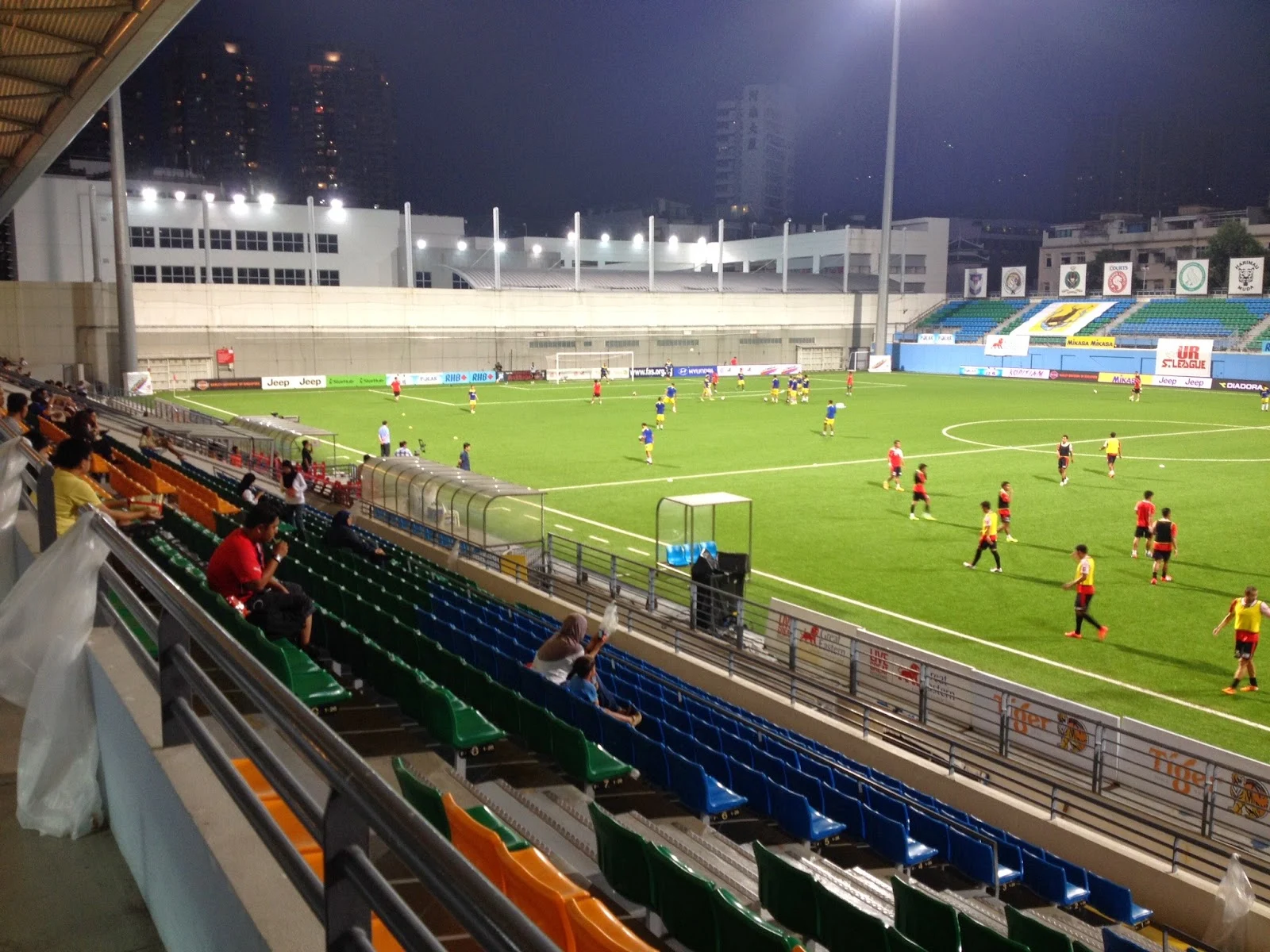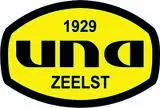The
Jalan Besar Stadium is the traditional home of Singapore football and home of
the Singapore FA. The original stadium was built in 1929 and staged Malaya Cup
games between 1932 and 1966 and then Malaysian Cup matches from 1967 until 1973
when the National Stadium at Kallang was opened.
Jalan
Besar was closed in December 1999 for reconstruction, fifteen years after it
had staged the National Day Parade.
In
June 2003 the new stadium was open as part of a sports complex owned by the
Singapore Sports Council, which also contained the Jalan Besar Swimming
Complex. The pitch remained in exactly the same position. In
2006 the pitch was taken up and replaced by a new artificial surface.
Burnley
and Atletico Madrid visited to play friendlies in future years. The
stadium became the home of Lions XII who joined the Malaysia Super League from
2012, going on to win the title in their second season.
Young Lions
S.
League side Young Lions also took up residency. The team are the Under
23 side of the Singapore national side. The team entered the league in 2002
with the aim of exposing the players to senior competition.
Lions suffered a couple of wooden spoon finishes, but ended in third
place in 2004 as Agu Casmir led the scoring charts. The side was bolstered at
this time by a couple of experienced overseas players to add strength.

The goals of Khairul Amri helped the team to third place in 2006, which
was backed up with a fifth-place spot twelve months later. Some lower finishes
eventually led to the team taking their full allocation of four foreign players.
It did not see too much improvement in the final rankings.
Aide Iskandar became head coach in 2013 with Sahil Suhaimi making an
impact as a forward the following season. Jürgen Raab replaced Iskander in July
2015 as his side finished ninth out of ten in the new streamlined S League
prior to Patrick Hesse taking over team affairs for the 2016 campaign.

The head coaches continued to change with Vincent Subramaniam becoming
the next incumbent. The team finished bottom for a second consecutive season in
2017. Fandi Ahmad, a Singaporean oversaw an improvement in 2018 as the club
ceased signing overseas players in the newly restructured Singapore Premier League.
Nazri Nasir was employed as head coach from January 2020 prior to being
replaced by Philippe Aw a year later. His team finished bottom of the eight-team
league in 2021, a performance replicated in 2022 by the side under the
returning Nasir as Ilhan Fandi topped his teams’ scoring charts.

Aw returned to lead the Lions in 2023 who signed foreign players once
again to try to strengthen the club. It failed miserably as they finished
sixteen points adrift in bottom place.
Courts
Young Lions will play in the Singapore Premier League in the 2024 season.
My
visit
Tampines
Rovers 2 DPMM Brunei 1 (Friday 31st October 2014) S. League Championship Round (att:
approx. 1,000)
My
planning had been just about perfect with my final of four games on consecutive
evenings could feasibly see me at the game where the title was to be won.
The
day had been top class once again. After a lie in I left my bags at the hotel
for later collection and enjoyed a great Friday lunchtime drink in the historic
old rooms of the pavilion at Singapore Cricket Club in the company of my sixes
cricket pal Sanjaya De Silva who had kindly taken time off to introduce me as a
guest and to look after me.
Unbelievably we ended up in the Officials Meeting
for that weekend’s International Rugby 7s Tournament being held at The Padang. To be honest, it wasn't too much better organised than some amateur cricket meetings I'd attended in the past.
My
free boat trip up the Singapore River on my great value three day tourist pass
was thoroughly enjoyed. I paid $30 (£15) for three days unlimited travel on
public transport and got the boat and bus tours with it.
Following
a look at the Harbour Front across to Sentosa Island I caught a double decker
bus back to my hotel, so I could sneak a power nap while sat upstairs. I later hailed a taxi which took me to the Jalan Basar Stadium for 6pm.
I’m
not one to get to stadiums so early but I’d had a stroke of luck the night
before on my way to the match at Woodlands Wellington, which I was definitely going to take advantage of.
I
saw a young local lad sporting the shirt of Albirex Niigata and I commented on
this as we waited to cross the busy Geylang Road. It turned out that he worked
for the DPMM club in Singapore and he told me to be at the venue at my
appointed hour so he could sort me out with an complimentary ticket for the
game.
While
the $6 ticket price wasn’t a problem, I’d hoped to pick his brain and learn a
bit more about the S. League, as i am always eager to learn.
Unfortunately
my pal hadn’t turned up, so I set about taking some snaps at the back of the
Main Stand. I then received a tap on the shoulder from him with an apology and
my ticket. What wonderful people live in Singapore!
The
poor stewards were in a bit of a quandary when I approached the gate with my
two large travelling bags. After some gentle persuasion I was let in without
them emptying them out to see if I had any concealed food or drink.
I
really liked the Jalan Besar. Only the Main Stand side was open. This had a
large lower tier with offices dividing this from a steep upper tier and its
curved roof. The far side was a fair sized block along the length of the pitch
with open seating raised above the playing surface. Each S. League club had a
board displaying their badge at the rear.
Behind the King George’s Avenue End
goal was a semi-permanent bank of open seating like the ones found around the
greens at major golf tournaments. The other end had no spectator access. Just a
large wall separated it from the Swimming Complex.
The lads doing the PA's and playing the music
at the back of the lower tier kindly looked after my bags while I wandered
around taking photos. I decided to push my luck and took a lift to the top floor
and the corporate area as I was in jeans and a dress shirt. I was inside without
any questions to be handed a team sheet and wander around as I liked before I
decided to call it quits.
Back
downstairs I took up a seat and watched the teams warm up while DPMM’s former
Sunderland player, Roy O’Donovan looked on disconsolately. He had been sent off
in the game I went to on Tuesday evening in stoppage time.
The
live TV cameras were in attendance for the game. A Friday night game was played
at the Jalan Besar each week as a neutral ground for the watching audience.
The
teams came out and the national anthem was played as it was the final game of
the season. Before kick-off Tampines retiring striker Aleksandar Đurić received
the plaudits with presentations and a video on the screen showing his career
highlights while on the island. The veteran started the match on the bench.
My
friend from the night before, the Portsmouth and Whitley Bay supporting pal
Richard joined me to view the action. I think he was favouring Tampines. I
would have preferred to see a Brunei win and the league title with it.
The
first half was a tense affair on the artificial surface, which wasn’t as giving
as the more modern versions. Jozef Kapláň, the Stags Slovakian forward was
causing plenty of problems for the DPMM defence, whose goalkeeper Azman Noor
had to be at his best.
Richard
and I had slightly misread the positions going into the game. We presumed a
draw for Rovers would secure them the title, whereas DPMM had to win. It later
transpired a Tampines win would get them a third place finish.
My
pal re-joined me after his half time smoke, with the good news that the nearer
south gate was open to enable me a quick exit at full time for my 11.05 flight
back to Bangkok.
The
very popular Đurić was introduced after the interval to try and force the
breakthrough. Although he wasn’t the fastest, his first touch and awareness
were exemplary. Meanwhile I saw a similar pattern emerging as in DPMM’s Tuesday
night victory as Irishman Joe Gamble controlled play in a deep midfield role,
as he never gave the ball away before making himself available again.
However the Brunei boys were missing someone
to open Rovers up. Someone like the suspended O’Donovan perhaps? Out of nowhere
Tampines took the lead as Kapláň beat Noor on his near post.
The
goal knocked the stuffing out of Steve Kean’s side for a while. Just eight
minutes later it was 2-0 as Đurić was denied a dream farewell but team mate
Miljan Mrdaković fired home the rebound. DPMM had just seventeen minutes to
salvage their title aspirations.
The
big Brazilian Rodrigo gave the smattering of visiting fans hope by pulling one
back on eighty one minutes. However, it was to be too little too late.
I
said my farewell to Richard as the fourth official put up the board revealing
that there would be four minutes stoppage time. I exited just before the final
whistle and managed to pull up a taxi quicker than I had initially feared.
The
driver knew exactly the quickest route as he deposited me at Changi Airport
with over an hour to spare. Like everything else in Singapore, the airport was
clean, spacious and ultra-proficient.
My
trip to the island had gone like a dream. I’d possibly overdone it with the
dashing around, but it was worth every bit of tiredness and pain at times. I
was so glad I’d used up my time properly and got a proper insight both into
life on the island and the S. League.
I
recommend it to any traveller. I certainly slept well when I eventually reached my bed at the Chana Hotel in Minburi back in Bangkok.





































































